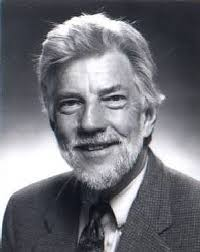With digital technology advancing more rapidly than any invention in history, it had reached over 50% of the world's population in just over two decades. Due to the never ending advancements that it has experienced, technology possesses many multitudes. Not only can it be beneficial, but it can also be incredibly damaging.
When technology was first invented, nobody knew what would become of it, or how it would impact almost all of society. The use of technology has woven its way into so many people's day-to-day lives. Whether it's through work, school, or personal enjoyment, technology has infiltrated people's routines and free time.
Mental Health Impacts
Multiple studies show how technology use and its complications have affected people's mental health. While this can be both positive and negative, the negatives tend to occur more often. Topics such as cyberbullying, revenge porn, ghosting, and body shaming can all lead to mental illnesses such as anxiety, depression, and sleep disorders.
Firstly, the definition of cyberbullying is bullying that takes place over digital devices and can include sending, posting, or sharing negative, harmful, or false claims about somebody else. Cyberbullying can occur on many different platforms, the most notable being social media, online forums, and online gaming systems.
Secondly, revenge porn is stated to be the non-consensual sharing of nude or sexually explicit images or videos. This can also include deepfake or AI generated videos of people as well. There are many laws that say that not only is revenge porn illegal, but it can result in jail time, a prison sentence, and fines.
As for ghosting, the literal definition states that this is the act of cutting off contact with somebody extremely suddenly with no explanation. This is most often done to past romantic partners, but is not limited to that. In this day and age, people do it to their friends, family members, and romantic partners.Lastly, body shaming has become a big situation mostly for young or teenage girls. Body shaming is when somebody subjects somebody else to criticism or mockery for body faults or imperfections. Oftentimes on social media- especially on TikTok- women make videos regarding how they are "too fat" or "need to lose weight" and they have negative impacts on other women.
All of these parts of social media, and technology in general, can have very negative effects and can result in anxiety, depression, and sleep disorders. Many people who experience anxiety around technology, can experience negative emotions from texts, emails, and social media posts. This is also referred to as digital anxiety. As for depression, many people who experience cyberbullying, the effects of revenge porn, ghosting, and body shaming can experience depression. Not only does it affect teenagers, but studies show that children have twice the ris of negative mental health outcomes (anxiety and depression) if they use social media for over 3 hours a day. Lastly, it is stated that people who use technology within an hour of bedtime are often impacted by sleep disruptions or sleep disorders.
Digital Footprint
A digital footprint is the recorded and traceable data trail a person has on the internet. Things such as what websites a person visits, what they post on social media, the shops a person buy from, and more. There are many different types of digital footprints, but they all store similar data that aligns with the things a person does. The different types are active digital footprint, passive digital footprint, private digital footprint, and commercial digital footprint.
First, an active digital footprint is data that a person creates intentionally, like social media posts. A passive digital footprint is data that is created without a person's direct involvement, such as data a person's phone generates while they are using it. Private digital footprint is data that is only available to a certain group of people, such as group chat messages. Lastly, a commercial digital footprint is data that is collected by business for their own purposes, such as the products a person buys online.
Digital footprints are extremely important because not only do they hold everything a person has done online, but nothing a person does ever fully goes away. It can also determine a person's reputation with their friends, family, and even future employers.Many people do not know the impacts of what they can have online. Not only will potential employers and universities look at a person's digital footprint, but the government can look at it before granting visas or citizenships.
With social media growing in popularity, people need to become more aware that what they are posting can have an impact on big events
in their future. Many young children and teenagers think that what they share online does not matter, but they are not informed that their digital footprint can be accessed by many important people in their futures.
Personally, I learned about how my digital footprint can affect my life at a very young age. When I first gained access to my own social media, my parents had to see what I was going to post before I did anything. Due to this, I was able to learn what was appropriate and what was not. Many children do not have this in place for them, and they will experience first hand how it can negatively impact their futures.
















